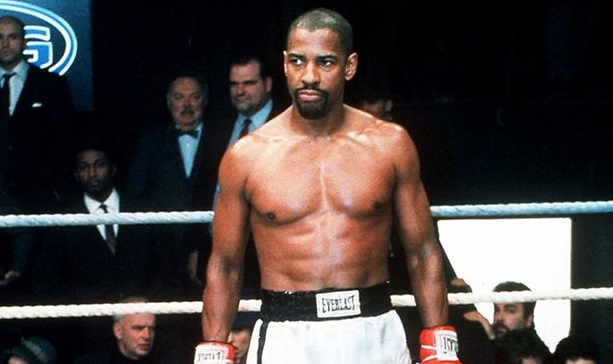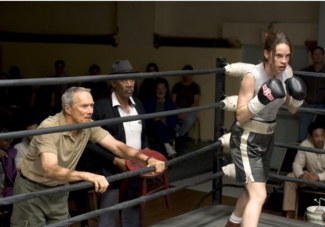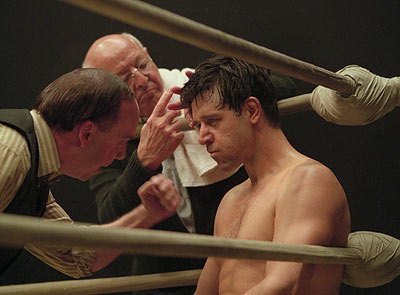By providing your information, you agree to our Terms of Use and our Privacy Policy. We use vendors that may also process your information to help provide our services. This site is protected by reCAPTCHA Enterprise and the Google Privacy Policy and Terms of Service apply.
9 Boxing Films that Land a One-Two Knockout Punch

 READ MORE: Watch: Jake Gyllenhaal Steps into the Ring in ‘Southpaw’ Trailer
READ MORE: Watch: Jake Gyllenhaal Steps into the Ring in ‘Southpaw’ Trailer
Jake Gyllenhaal and his new muscles star are front and center in Antoine Fuqua’s boxing drama “Southpaw,” which opens nationwide today. “Southpaw” is the first of several boxing films expected to come out in 2015. Other titles in the lineup include “Bleed for This,” starring Miles Teller and Aaron Eckhart, “Hands of Stone,” starring Edgar Ramirez and Robert De Niro, and Ryan Coogler’s “Creed,” featuring Michael B. Jordan. With the next generation of talent stepping into the ring, what is it that makes boxing films so great?
In comparison to other sports, boxing suits the structure of cinema in more ways than one. Boxing films make up their own sub-genre, and the subject is often synonymous with the production of critically acclaimed works. Relying on formal elements to construct a relationship between the boxer, the ring and the film’s aesthetic, the directors use a contender’s quest for the title as a means to address a variety of social and personal issues, including the boxer’s fight against himself as he exchanges blows with the world around him. The reciprocal relationship between the individual and the society broadens the film’s scope, as the context and underlying themes comprise politics, class, race, gender and family dynamics. Below, Indiewire offers up some of the best boxing films that emanate these qualities.

“The Fighter” (David O. Russell, 2010)
Mark Wahlberg stars as “Irish” Micky Ward in David O. Russell’s “The Fighter.” Based on a true story, it follows Micky’s transition from “a stepping stone” boxer into a world champion. “The Pride of Lowell, Massachusetts,” his half-brother, Dicky Eklund (Cristian Bale), is a former boxing legend that turns into a crack-addict. Doing more harm than good, Dicky trains Micky as his mother poorly attempts to manage his career. Boxing is the medium O. Russell uses to address the complex family situation. He quickly establishes the link between the distinct boxing styles and the personalities of the two brothers. Micky’s introverted character parallels his tactical approach as an inside fighter, whereas Dicky’s strategy as an outside fighter mirrors his inability to confront reality and accept responsibility. From the opening street sequence, where Micky and Dicky stop traffic, to their ring entrance, which features a surprisingly emotional rendition of Whitesnake’s “Here I Go Again on My Own,” O’ Russell familiarizes you with the brothers. The mundane visuals, subjective shots and industrial flavor add to the film’s everyday aesthetic. The boxing scenes are brightly lit and capture the essence of a televised broadcast. An HBO Documentary crew follows the brothers, filming what Dicky thinks is his “comeback,” but in actuality is an expose into his drug addiction. The deceiving documentary echoes O.Russell’s visual approach, as he unmasks the sports biopic to reveal a gritty family drama. By creating a familiar look, he distances the ring and emphasizes the complex family dynamic as the most important battle Micky has to fight.

“Raging Bull” (Martin Scorsese, 1980)

“Girlfight” (Karyn Kusama, 2000)

“Rocky” (John Avildsen, 1976)

“The Hurricane” (Norman Jewison, 1999)

“Fat City” (John Huston, 1972)

“Million Dollar Baby” (Clint Eastwood, 2005)

“The Boxer” (Jim Sheridan, 1997)

“Cinderella Man” (Ron Howard, 2005)
By providing your information, you agree to our Terms of Use and our Privacy Policy. We use vendors that may also process your information to help provide our services. This site is protected by reCAPTCHA Enterprise and the Google Privacy Policy and Terms of Service apply.

















